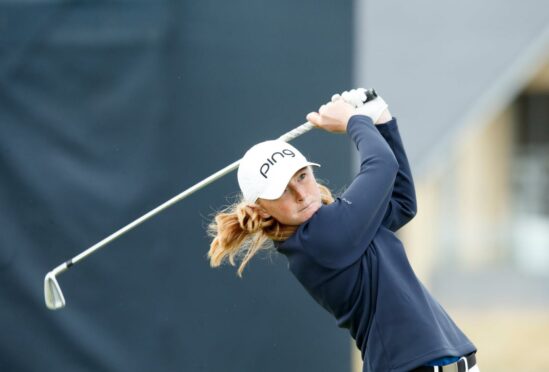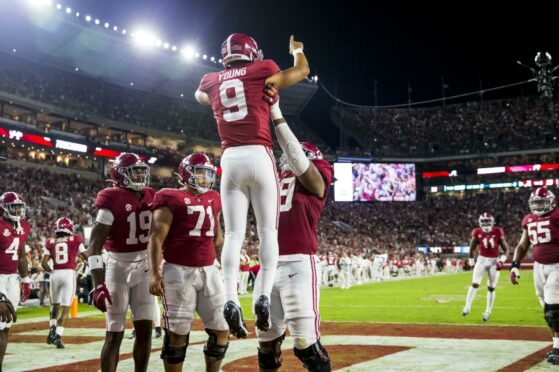One of my all-time favourite books is Paul Gallico’s “Farewell to Sport”, which contains a chapter entitled “Amateurs? There Ain’t None”.
It feels that way in golf these days. Only Gallico’s classic was written in 1936.
The book is a paean to his years covering the Golden Age of American sport in the 1920s and 30s for the New York Daily News. Jack Dempsey, Gene Tunney, Babe Ruth, Bobby Jones, Helen Wills, Jesse Owens, you get the idea.
Much of “FtS” is still incredibly pertinent to today, including his lambast at (sh)amateurism. That chapter’s targets were the college stars who took money under the counter, and were permitted to by a sport putting on a public face of integrity in holding to amateur ideals.
And for decades it stayed like that, but for the odd fine or suspension for someone just too blatant in taking the coin.
But now, in the 21st century, that’s all over.
Name, Image, Likeness
The NIL (name, image, likeness) directive has been introduced – under some duress – by the NCAA who administer US college sport. Student athletes are now entitled to remuneration from sponsorship based on their or their team’s performance.
And quite rightly. Some college sport in the US – specifically American Football and Basketball – are multi-million earning businesses with huge crowds and TV rights. Big universities were cashing in on the star play of young athletes and not having to pay them much more than a pittance of their scholarship and board.
It basically means that amateurism is gone. Bryce Young, the star quarterback for the Alabama Crimson Tide – US college football’s Real Madrid – stands to benefit by more than $1m in endorsements under NIL this year.
It’s impossible to ponder last week’s announcement of the R&A and USGA to further loosen the rules of amateur status without considering this. The College golf system in the US is possibly the game’s most effective developmental tool, even if it’s not remotely comparable in financial reward to football or basketball.
Golf the last big sport to cling on to ‘amateur’
Find out about the new Rules of Amateur Status which will come into effect from 1 January 2022 ⛳️ 👉 https://t.co/jnTFkX25lv pic.twitter.com/h3tMJgWIYt
— The R&A (@RandA) October 26, 2021
Since NIL, golf is the last sport that clings hard to the “amateur” ideal. The line barely exists in tennis or rugby now. The Olympics, for whom it was the central ethos, just dropped the whole thing.
Golf has the historic Amateur Championships, and there’s a clear demarcation based entirely on money.
Just this summer Louise Duncan, the Women’s British Amateur champion, had an exceptional weekend at the AIG Women’s British Open at Carnoustie.
Had she simply called herself a professional before the tournament started, she’d have won £80,000. As she stayed amateur – she wants to finish her degree at the University of Stirling – she didn’t get a penny.
But in truth what golf persists in calling an amateur is really nothing of the sort. What it increasingly – almost exclusively – means in golf is a future professional in development.
The clear difference between Louise and us
Still buzzing from the 2021 AIG Women's Open? So are we!
Relive all the action from a final day that saw @ANordqvist claim the title and @louiseeduncan take home the Smyth Salver!https://t.co/vaRy4YnaqP#WorldClass pic.twitter.com/GbLYNtVlGQ
— AIG Women’s Open (@AIGWomensOpen) September 13, 2021
The top amateurs who play the elite championships are simply honing their talents, many completing their degrees like Louise.
They get expenses and equipment paid for by national unions. They’re entitled to engage management companies and it’s okay if they wear or use equipment bearing the prominent logos of suppliers.
Of course, there are many, many other “amateurs”. You and me, basically. The 98 per cent of golfers who play for fun and/or recreation. Ludicrously, we’re regarded in the same breath as brilliant players like Louise, or Rose Zhang, and all the other brilliant young talents.
And we’re not the same at all. It’s a tougher school to graduate in than Applied Maths, but all of these developmental professionals are likely to be actual professionals. No ordinary golfers – other than the deluded who think they might have a crack at the seniors at age 50 – have any such ambition.
A few weeks ago in T2G we raged at the R&A and USGA for their pointless change in the rich language of golf.
In matchplay, “all-square” and “level” are now “tied”, “hazard” is now “penalty area”, and all the rest. Supposedly it’s because the new terms are more easily understood.
But applying the same reasoning, why do we still have “amateur” sitting in such a prominent position in the rulebook? It makes no sense whatsoever. The original definition has been mangled beyond recognition over decades and now has pretty much no meaning at all.
And it’s certainly much harder to explain to the uninitiated than “all-square”.
A new way to describe golfers
📽️ | Take a look back at the best bits from @GullaneGolfClub as Raymond and Elise McQueen are crowned #PINGMixedChamps Champions!
Full report 👉 https://t.co/ZmPKqL6boo pic.twitter.com/XtWFjTWFXk
— Scottish Golf (@ScottishGolf) September 23, 2021
I’m not really in favour of changing any more of golf’s treasured lexicon. I am definitely not in favour of removing the great Amateur Championships, my favourite events to watch and attend.
But we need a different definition of what we’re dealing with. Especially so given the now inevitable move to bifurcation of the equipment used by the elite and the rest of us.
Clearly the top amateurs, the developmental future professionals, will have to use the same kit as the pros – it’s part of their journey. The rest of us will be allowed to happily whack away with unregulated sticks and balls. Well, so long as the club committee approves.
So instead of a demarcation line being drawn between amateur and pro, it needs to be redrawn between elite and recreational player. Because that – instead of just money – is going to become the chief difference between the sectors.
Could the recreationals play in elite events? Sure, but only with the right kit. And like now they don’t get the money. The “career amateur” – a rapidly dwindling sector anyway – can still exist.
But we could move away from this hypocritical nonsense. Be honest about what our best young “amateurs” actually are, and where they’re headed.
And maybe if they play well enough like Louise, they get to keep at least some of that £80k. They totally deserve it, after all.

